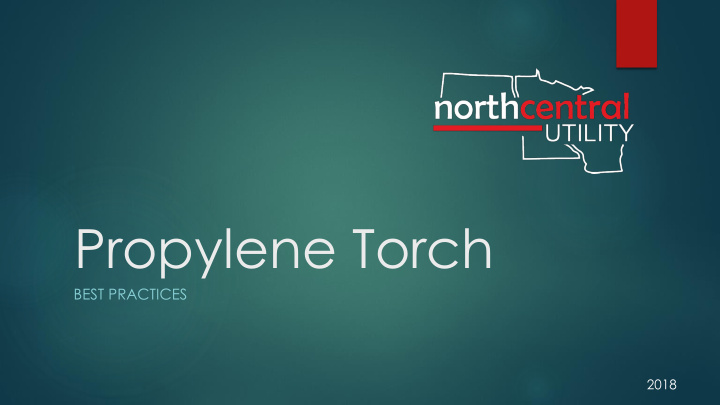



Propylene Torch BEST PRACTICES 2018
Tool Uses NCU Primarily uses the propylene torch for cutting carbon steel ► Cross members ► Rusted nuts/bolts ► Shock mount brackets ► Landing Gear/Legs ► Rear Bumper
Best Practice - Tooling Inspection Set-up Operation Storage
Inspect Before Use Preparation No unnecessary flammable materials exposed No grease or oil near cutting area Place tank on level surface in upright position Safety Tinted goggles, face mask Gloves, long sleeves, Pants, and boots should be worn Have a fire extinguisher readily available
Set-Up Assembly Connect propane and oxygen hoses to tanks Connect Torch to propane and oxygen hoses Screw cleaned tip into torch Check hoses and connections for leaks Check tip for anything blocking the hole
Lighting the Torch Open propane valve on torch handle Use a Striker only to Ignite the gas Open oxygen valve on torch handle Adjust flame to neutral or approximately 40 psi
Operation Hold torch tip 1/8” to 3/16” from metal Wait until metal begins to puddle or melt Depress oxygen cutting lever Wait for oxygen stream to push molten metal through, creating “kerf” Watch puddle and listen to adjust cut speed
Essential for a good Cut Clean tips Propylene and oxygen levels set to working pressures Clean metal Neutral flame
Watch Out For… Things to watch out for Bad Connections Leaking hoses Smell of gas Flammable materials around the work area Improper Use Lighting torch with anything other than a striker Using dirty equipment Bringing flame close to tank, hose, or anything flammable
Instructional Video Propylene Torch Video https://www.youtube.com/watch?v=CfvYfzE0P9I
Tool Storage Shutting Down Turn off gas Turn off Oxygen Bleed out both hoses Wrap up hoses Wait for tip to cool before storing Store gauges, hoses, and tanks in a safe clean place Transportation Secure tanks with caps for transportation
Training Training Quiz https://www.flexiquiz.com/SC/N/d53f3e73-0446-4379-be6a- 15a9c7d29efe
Recommend
More recommend